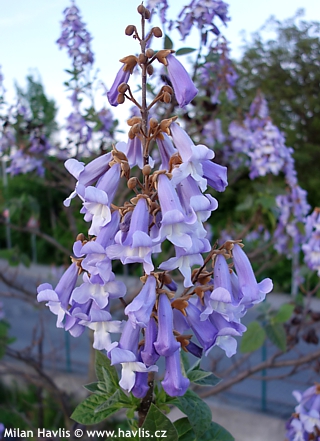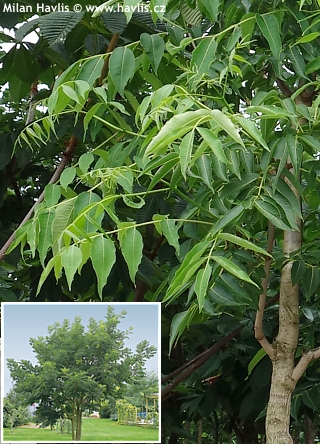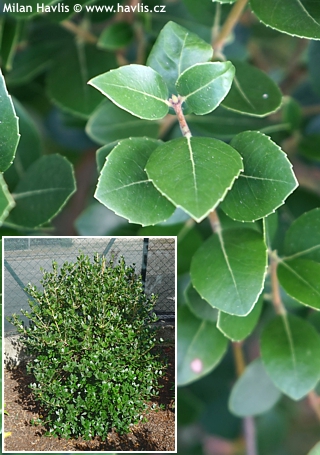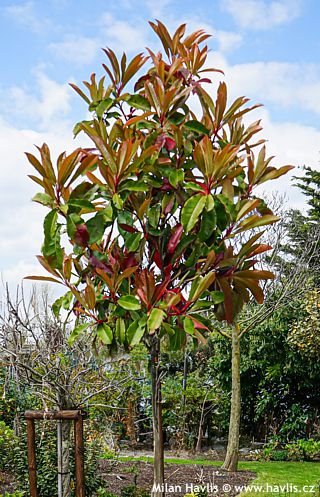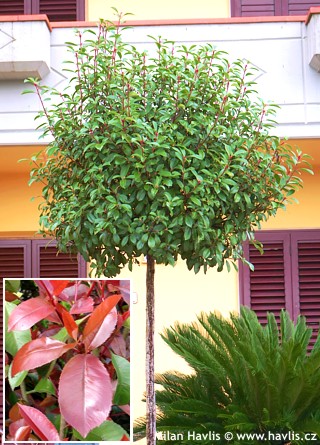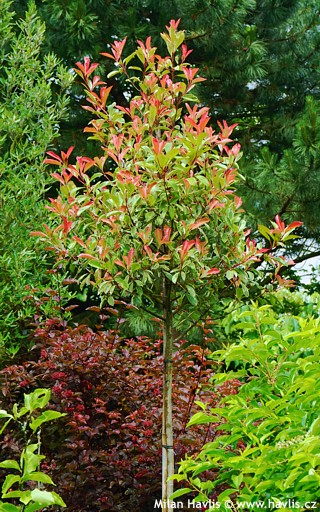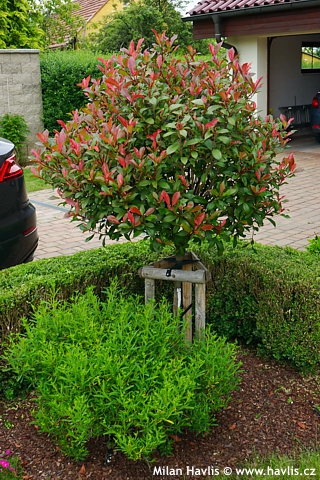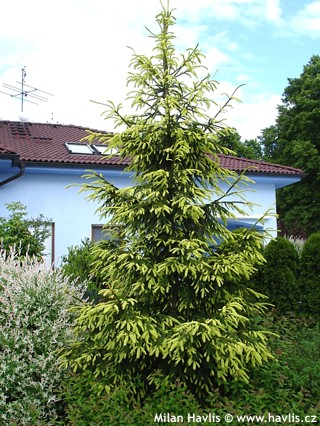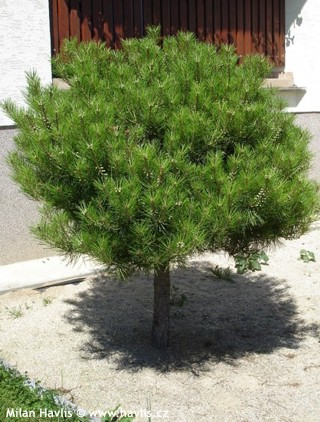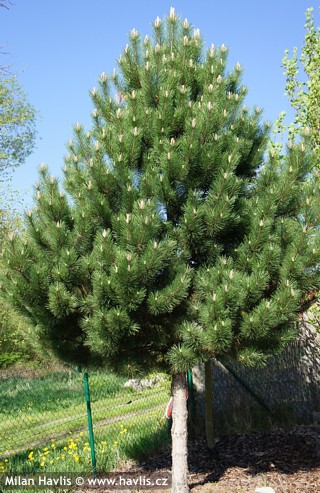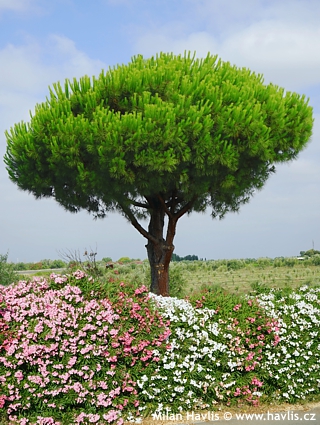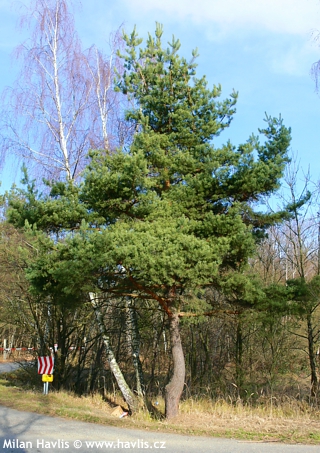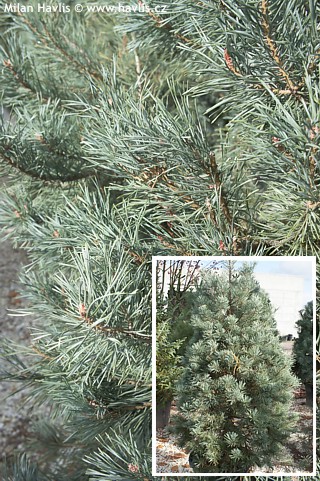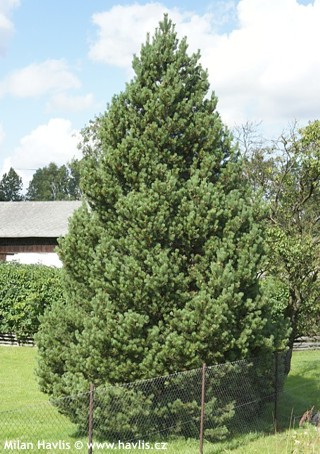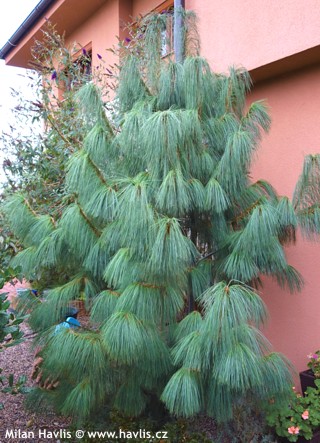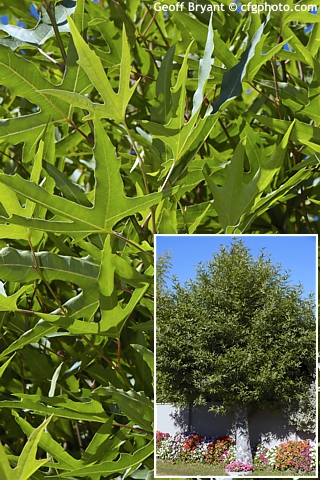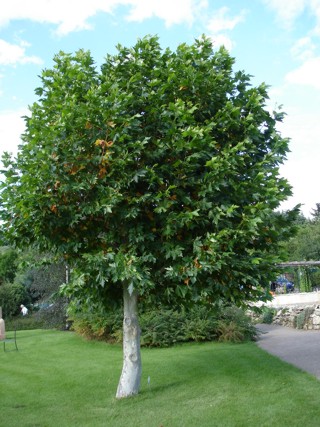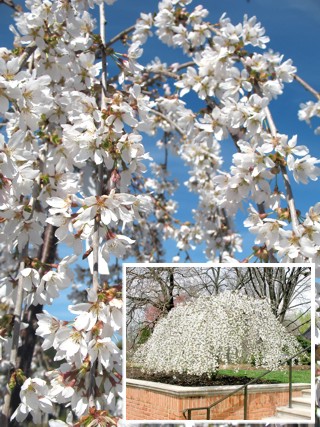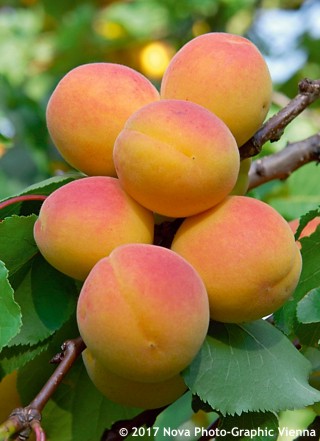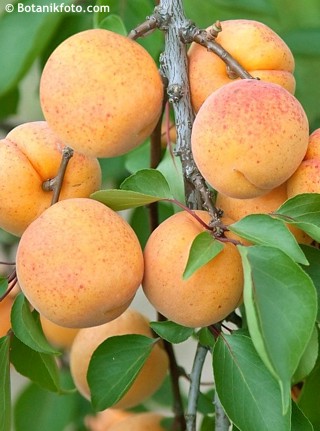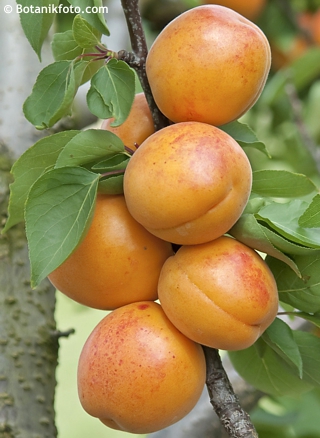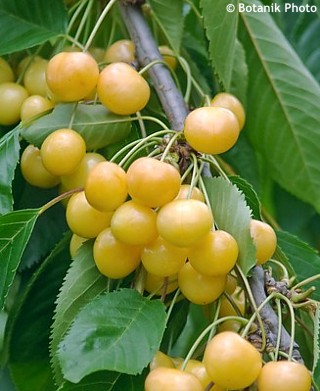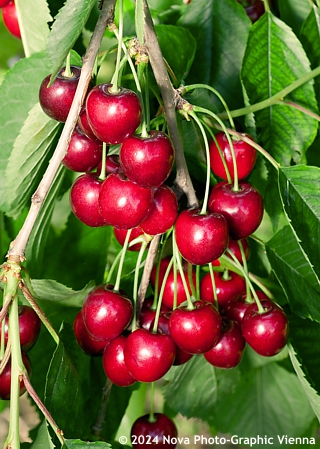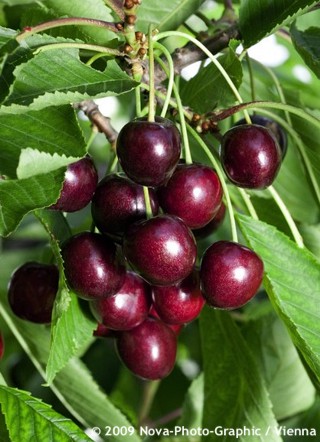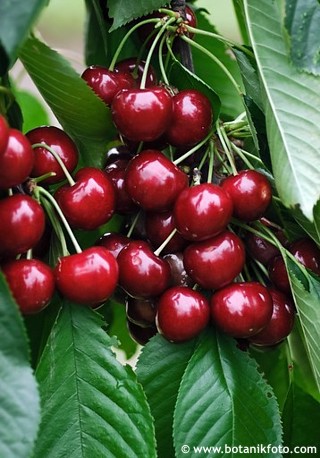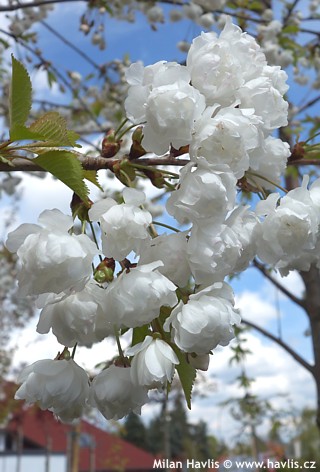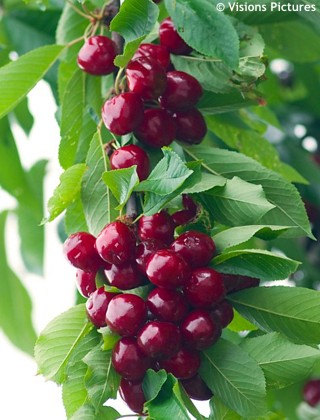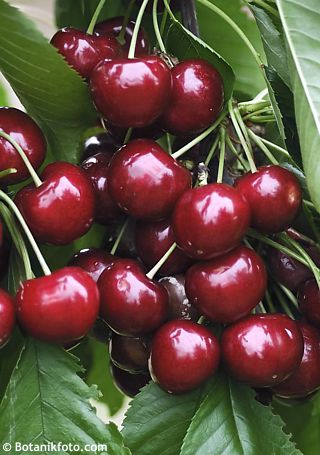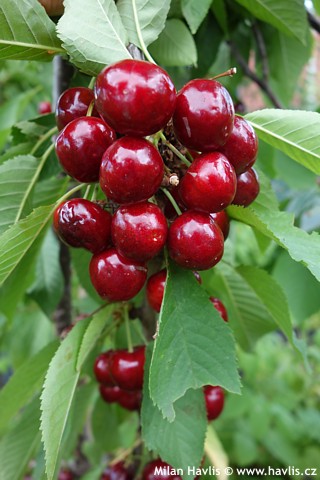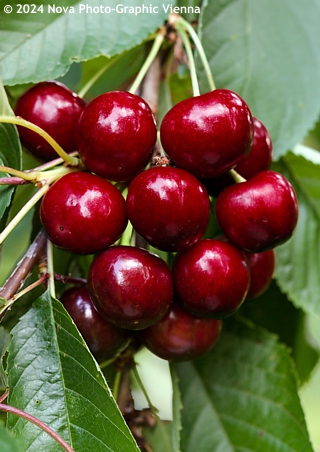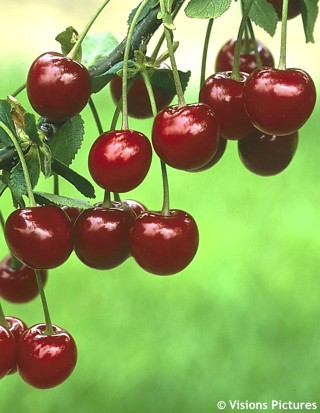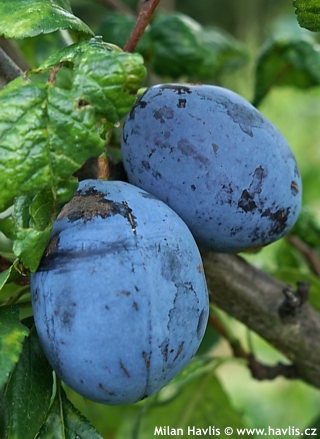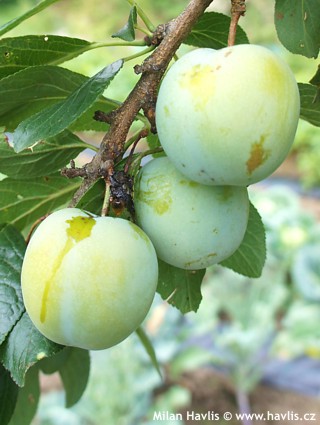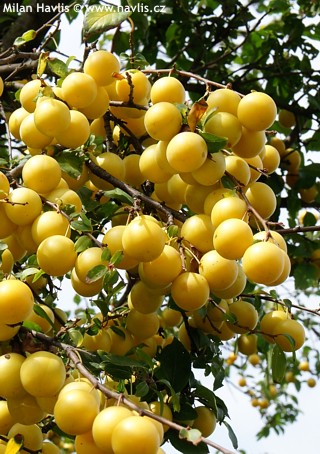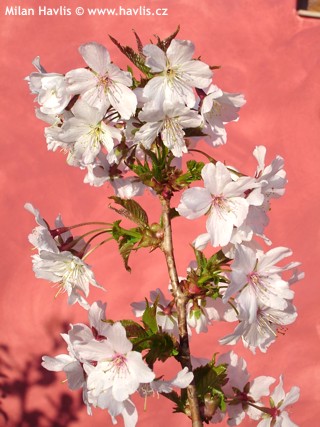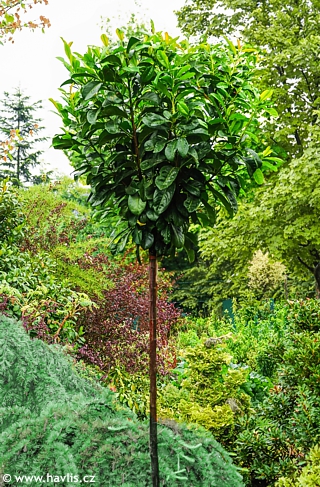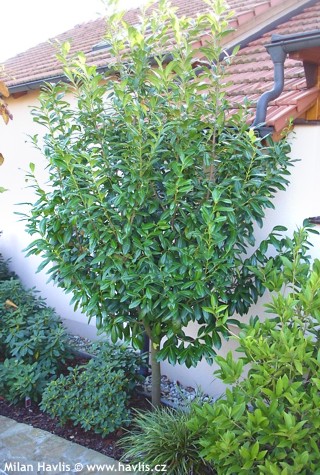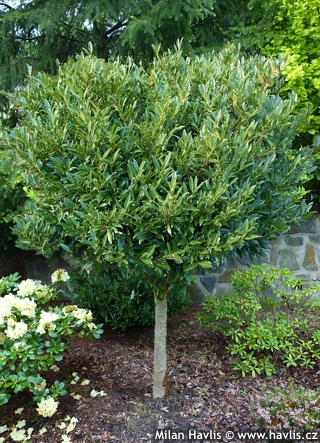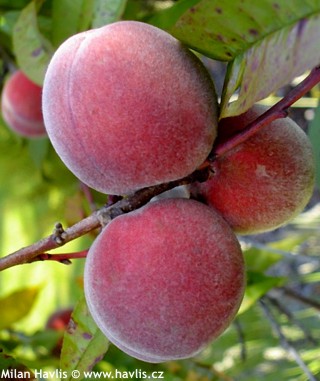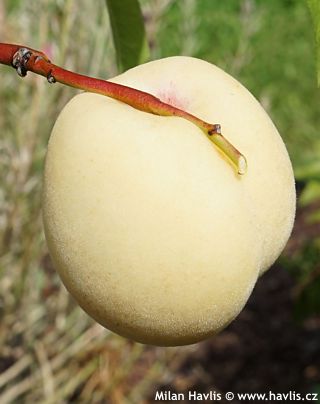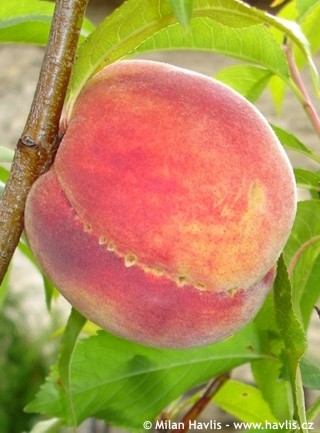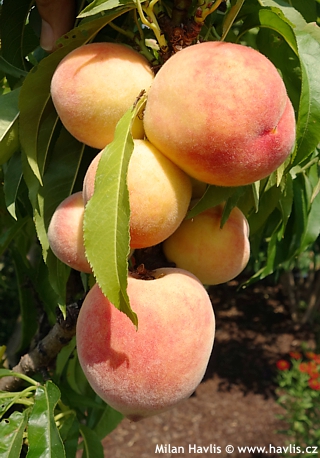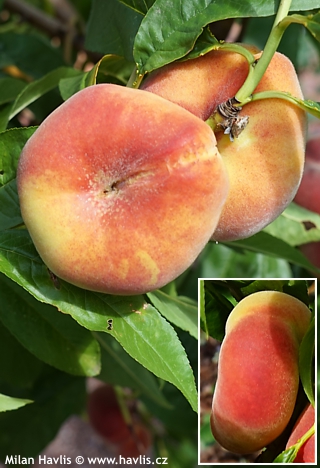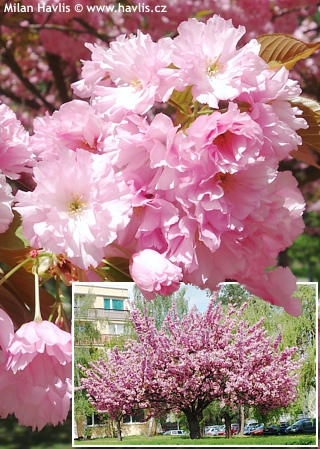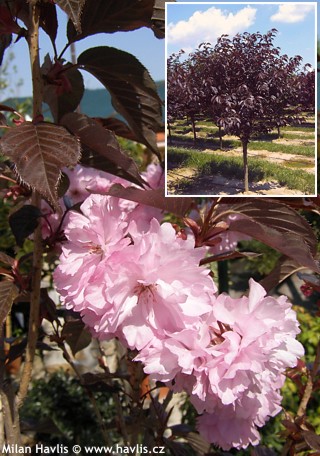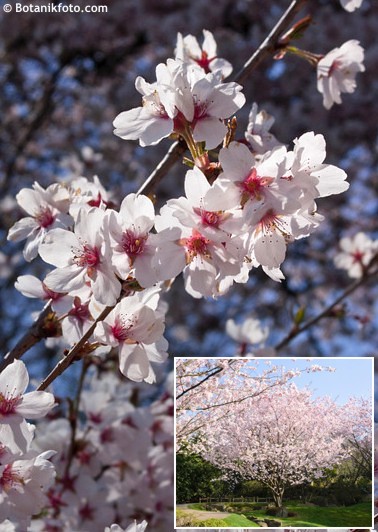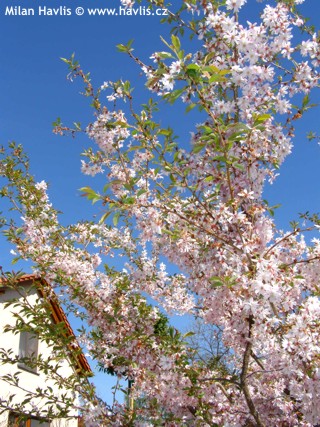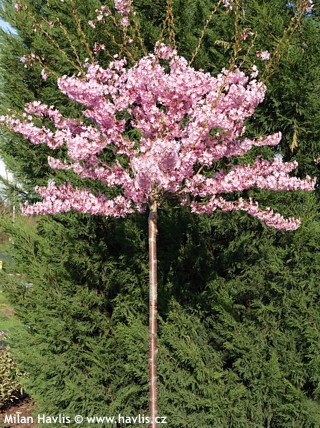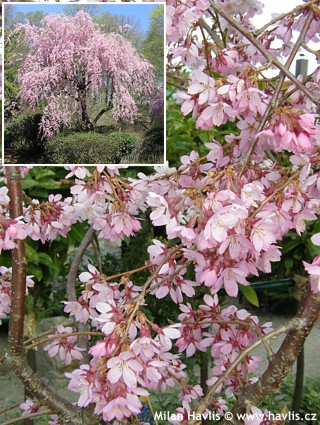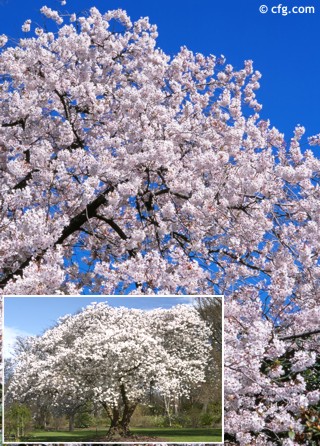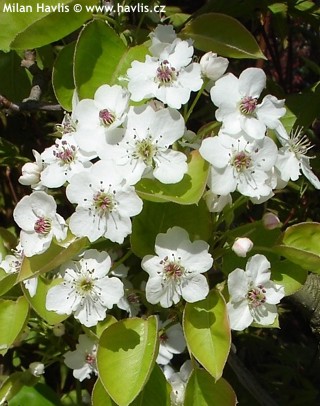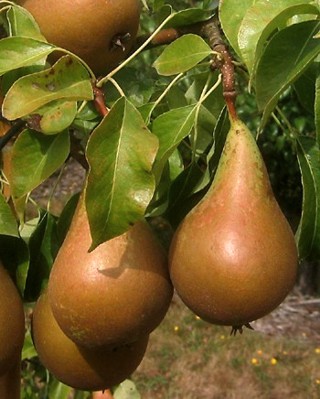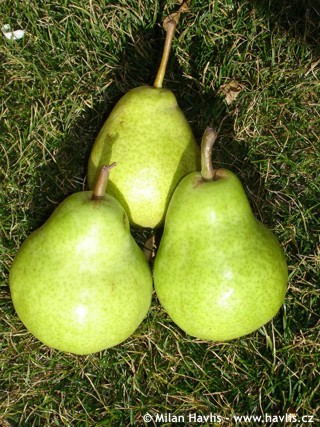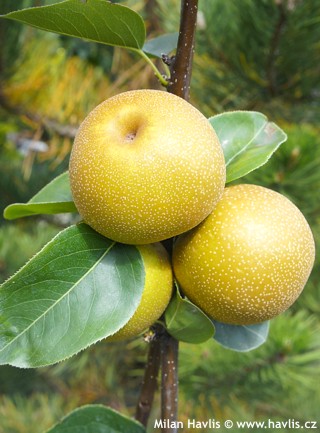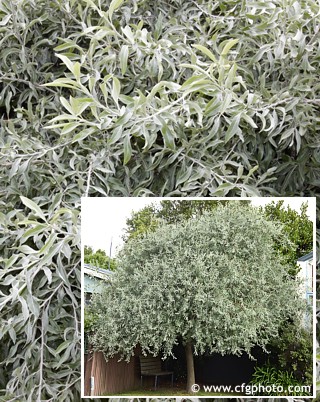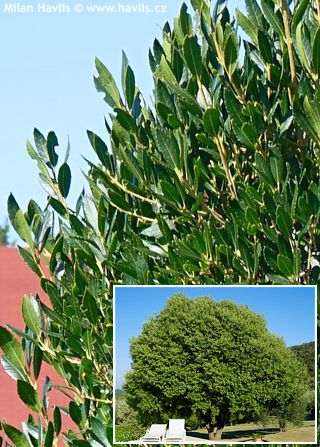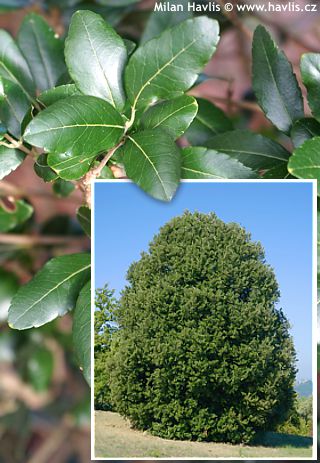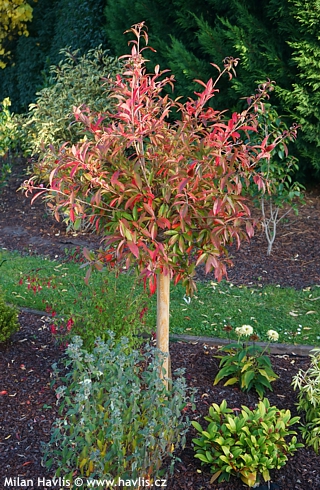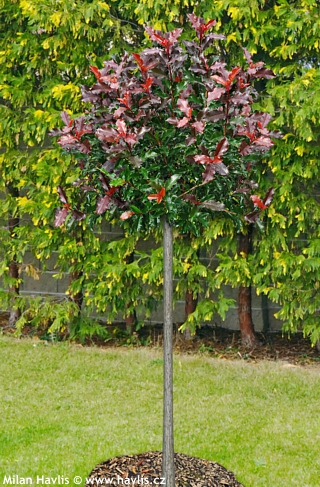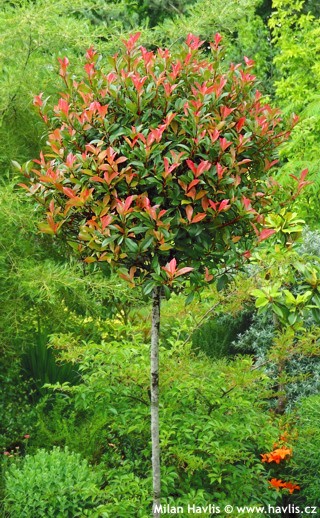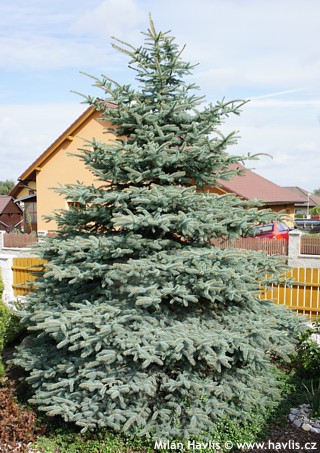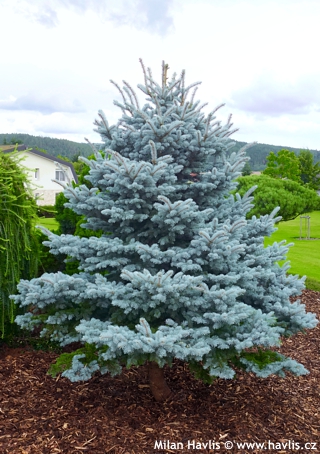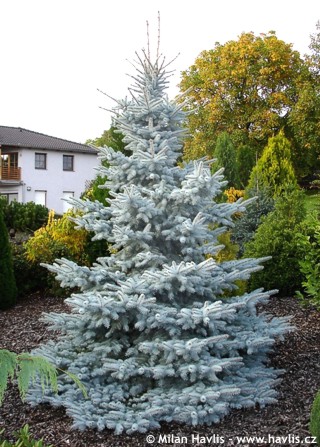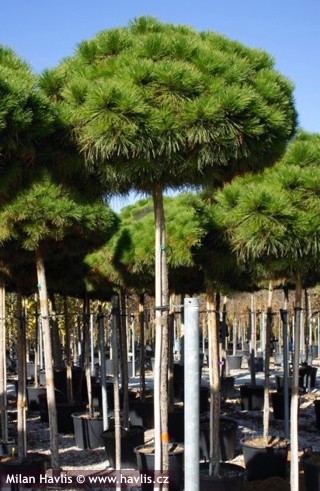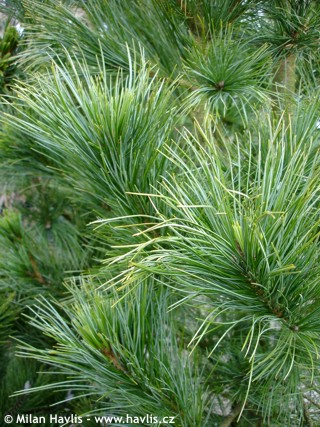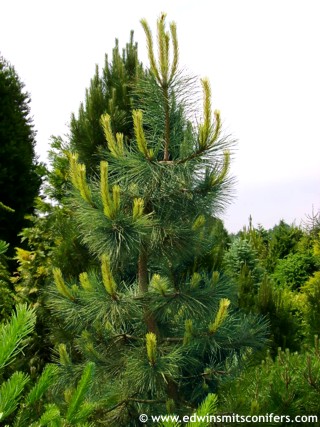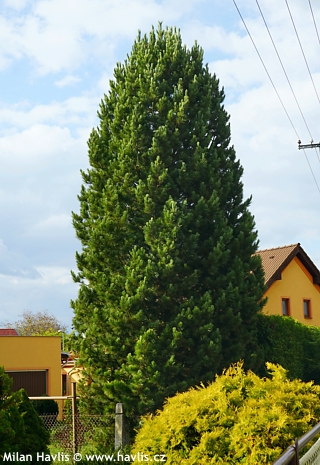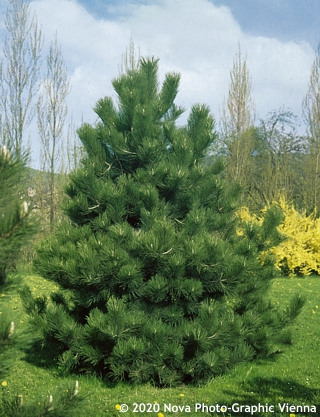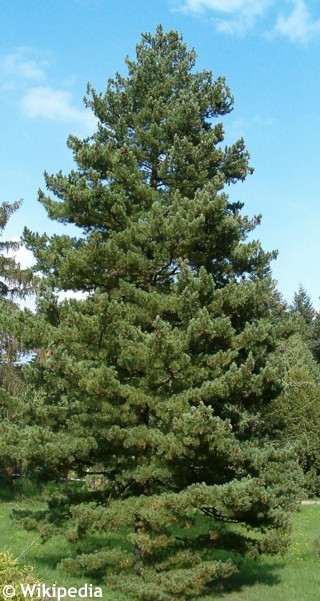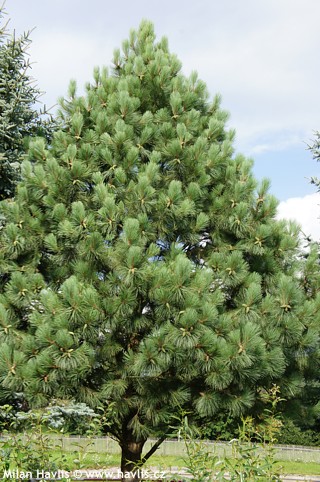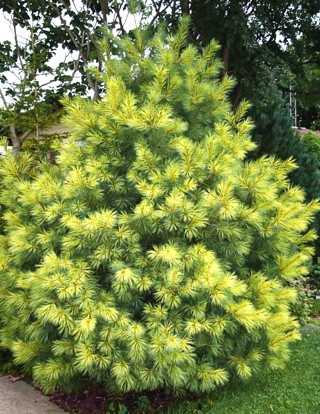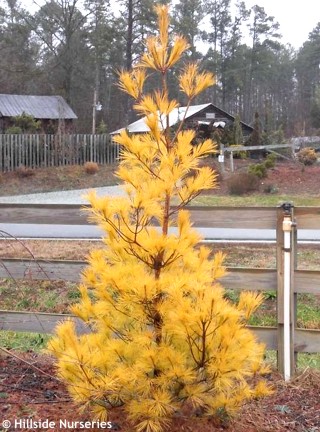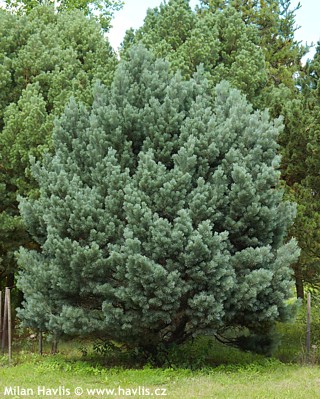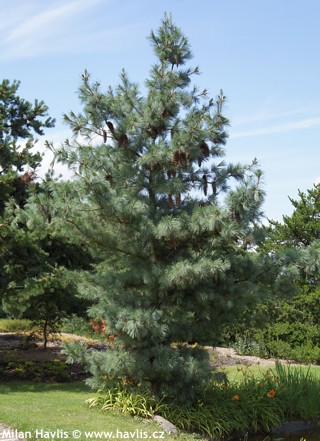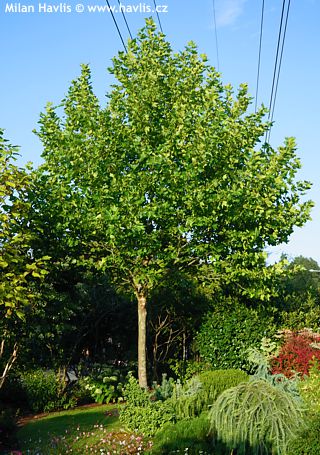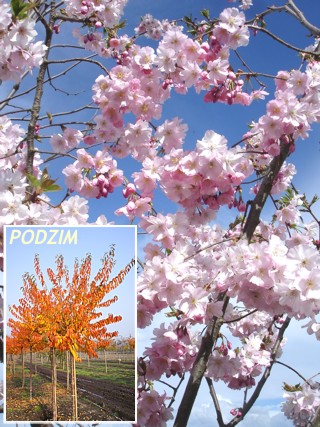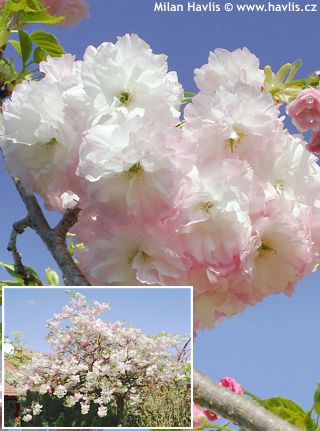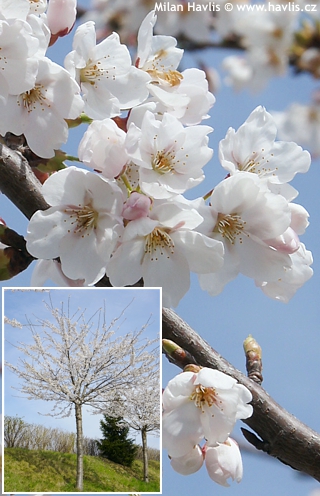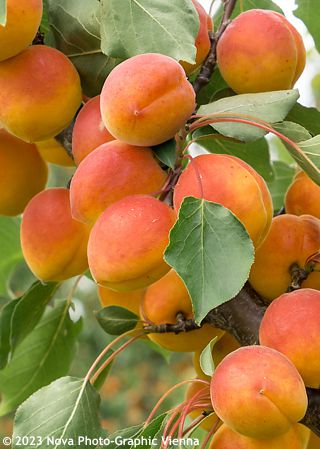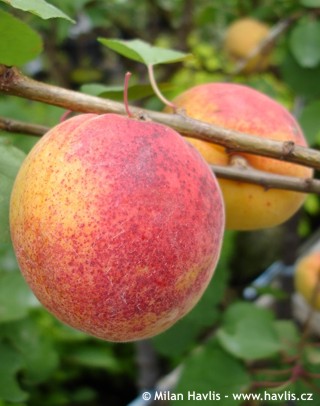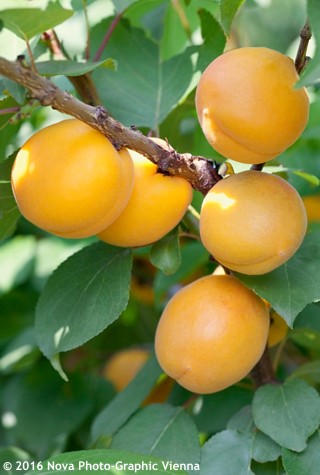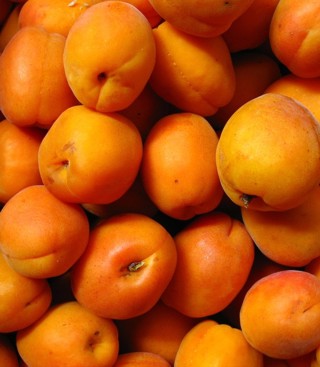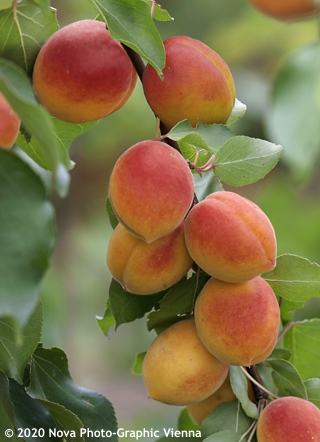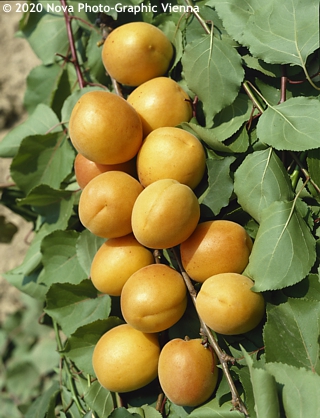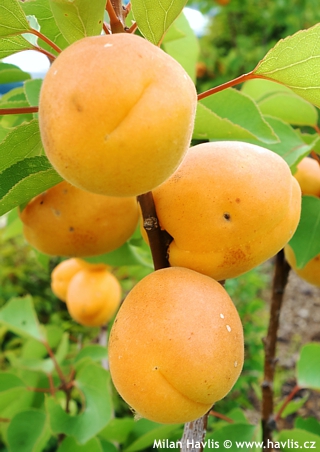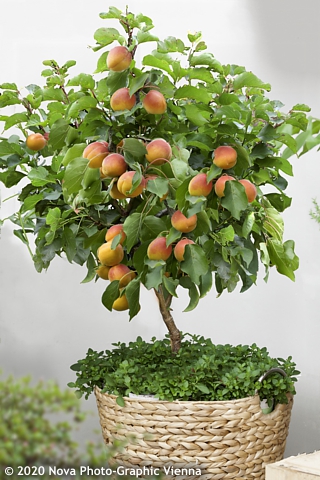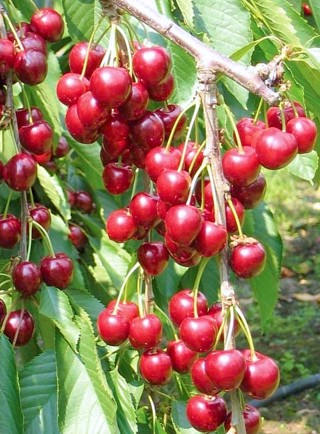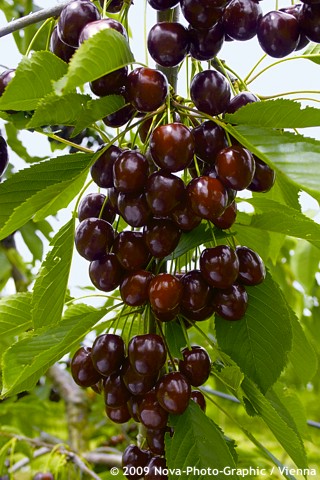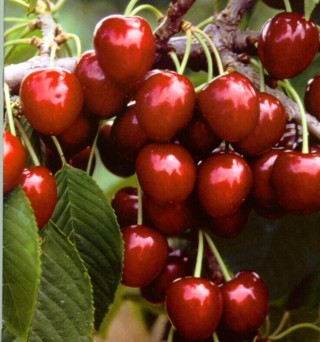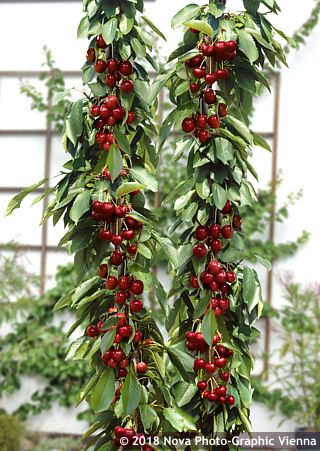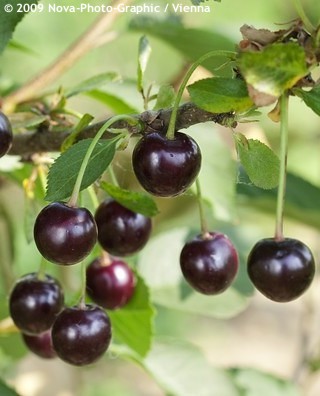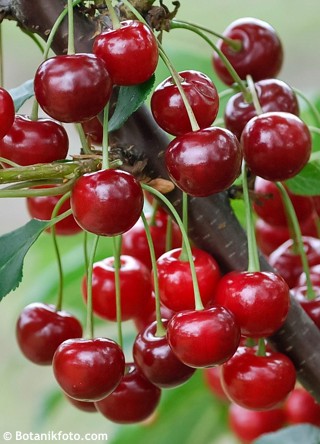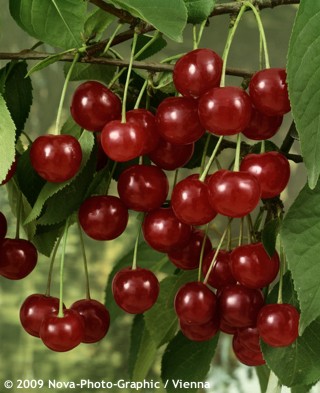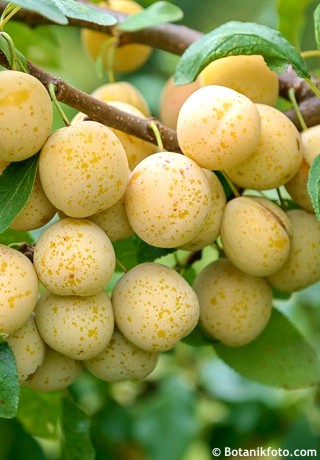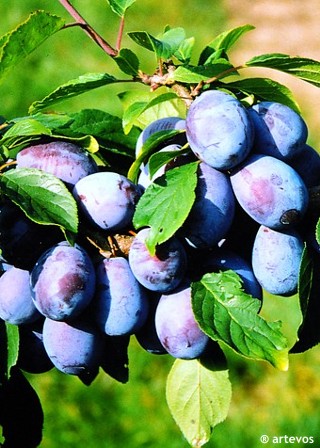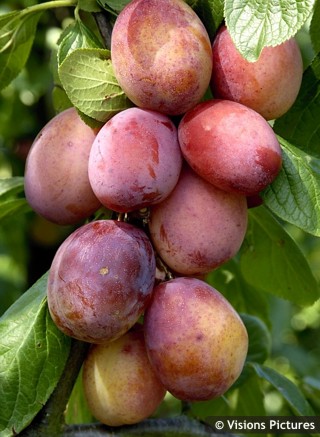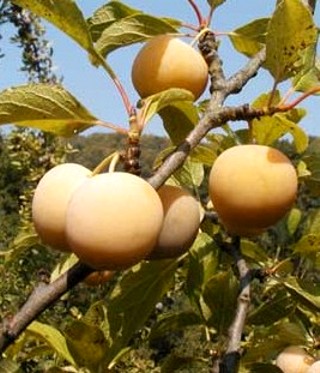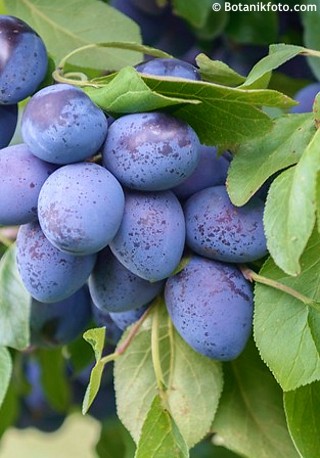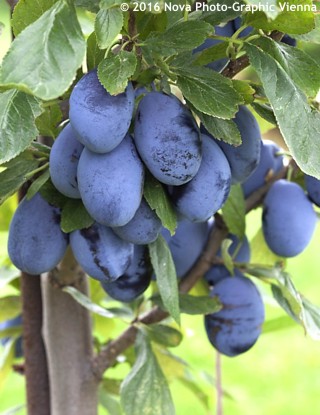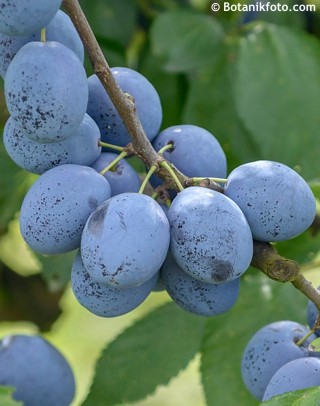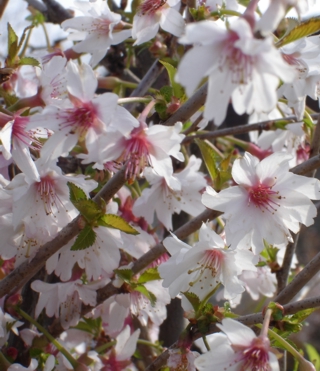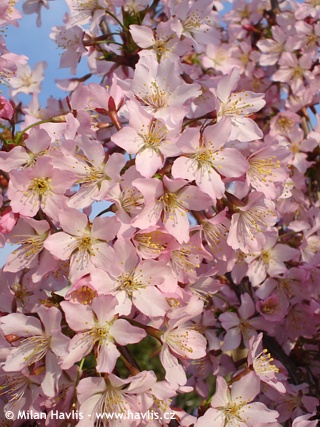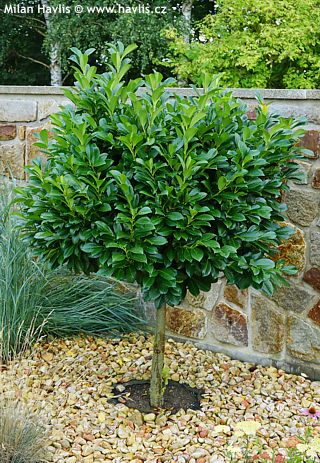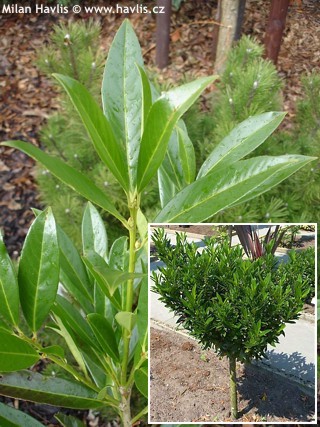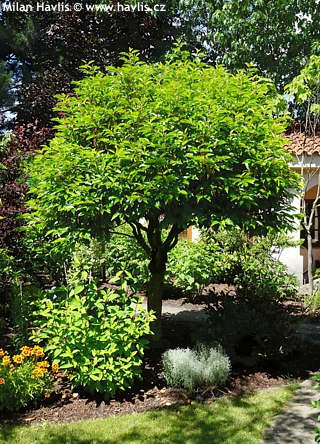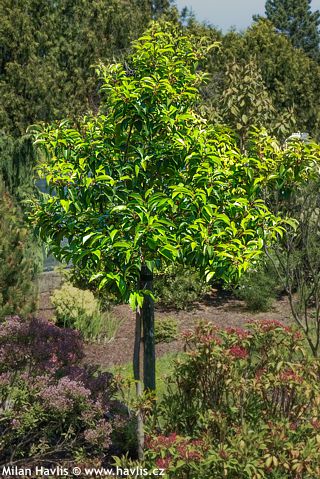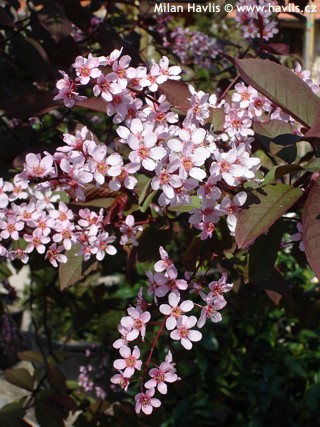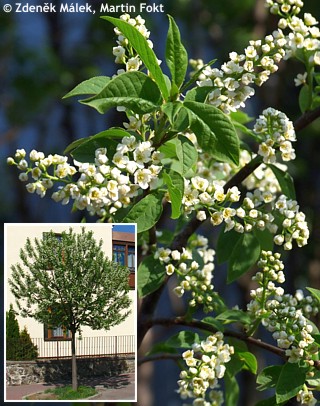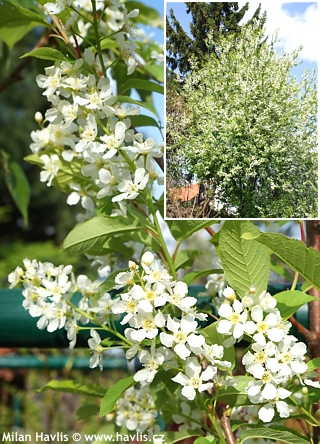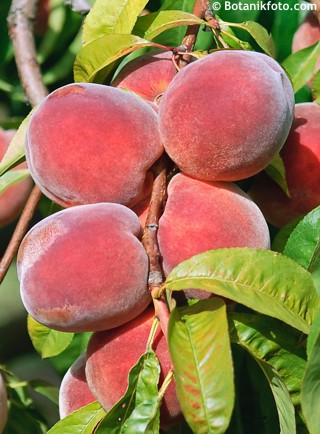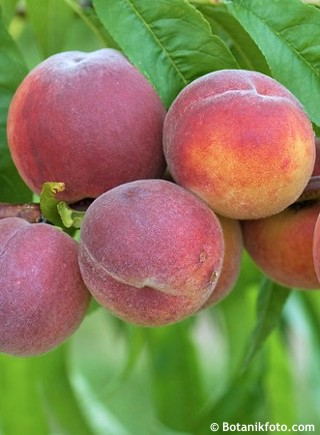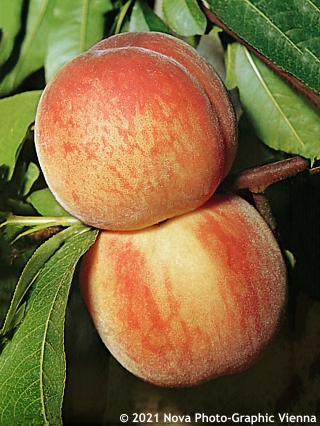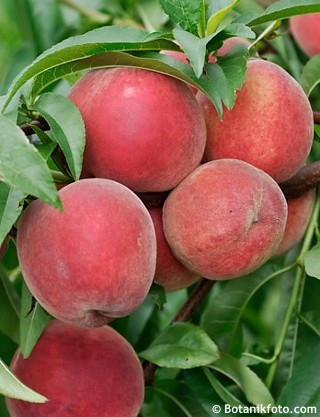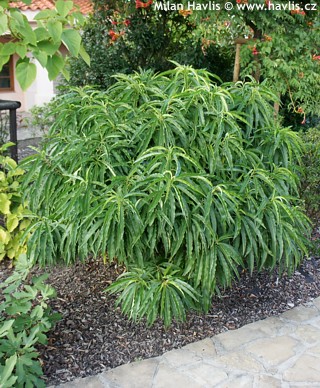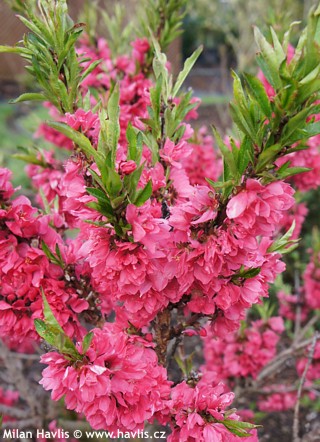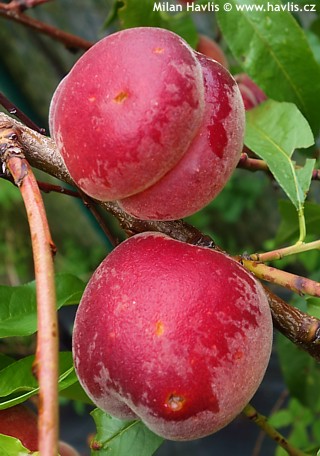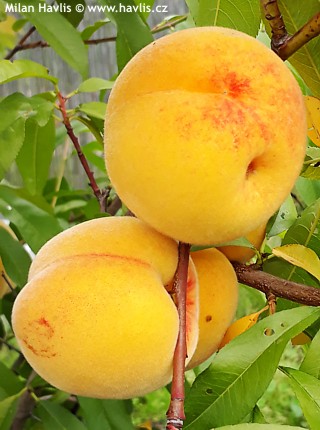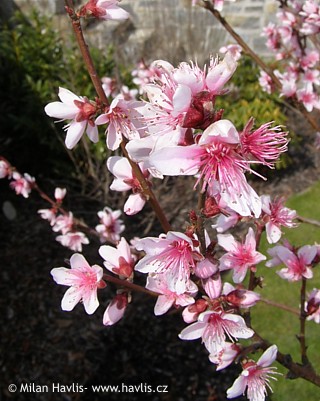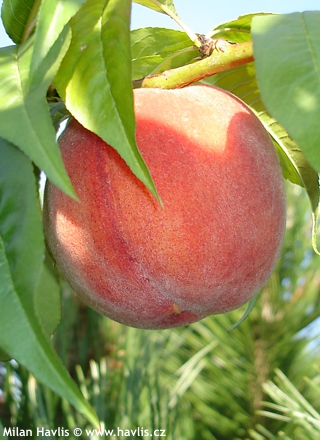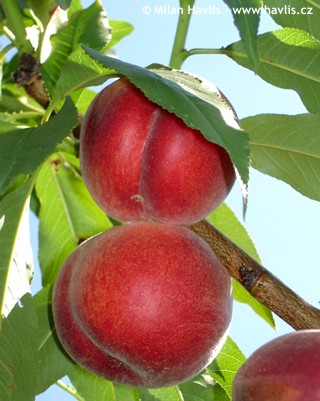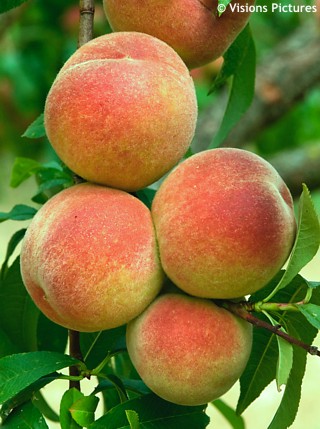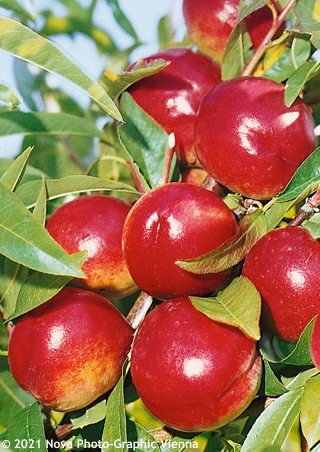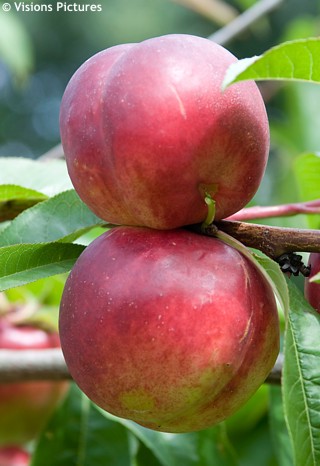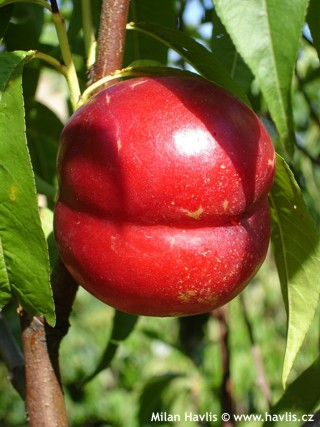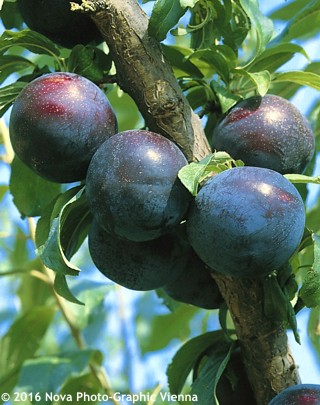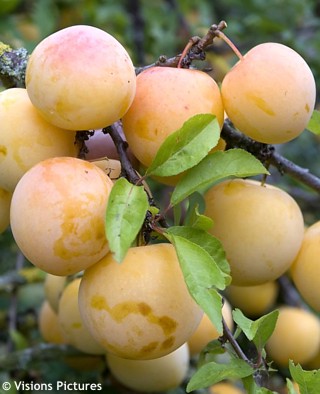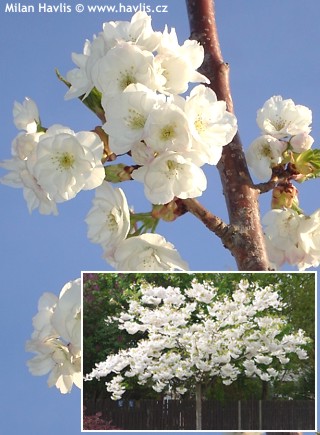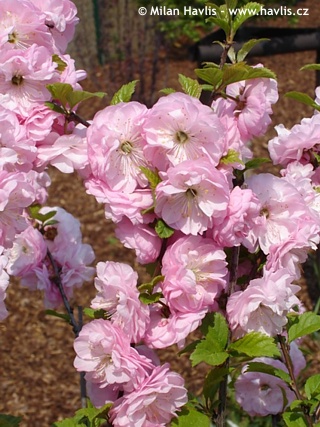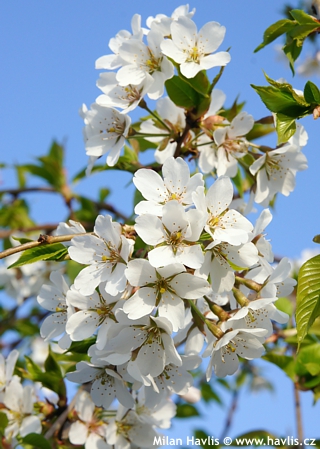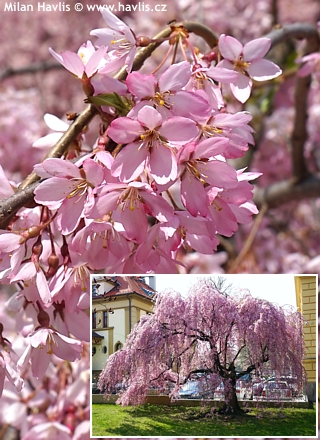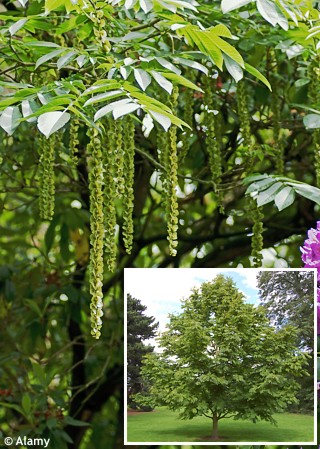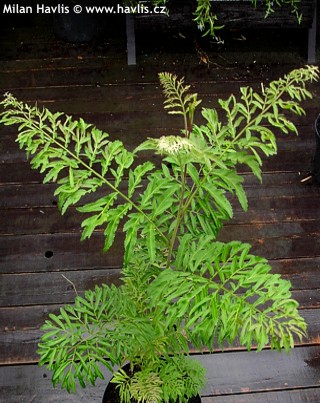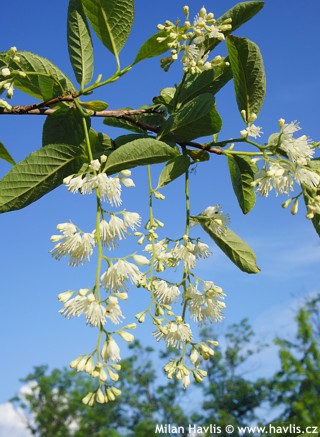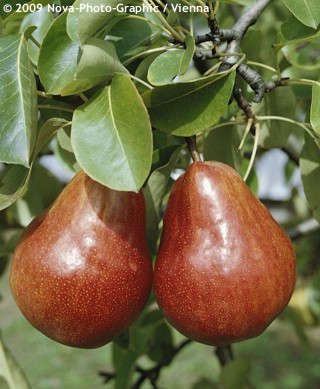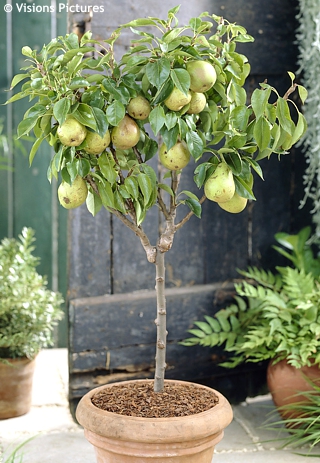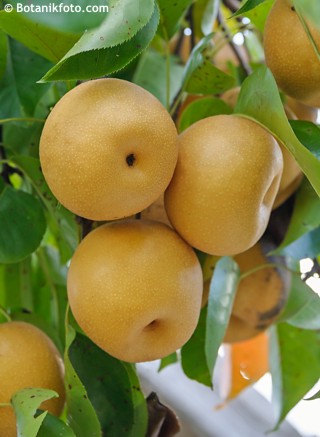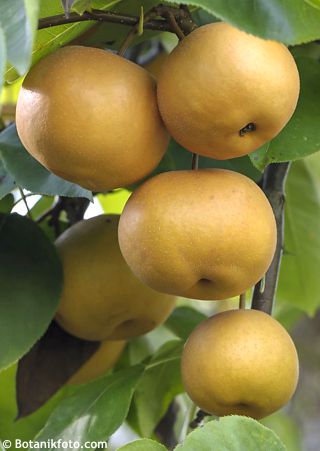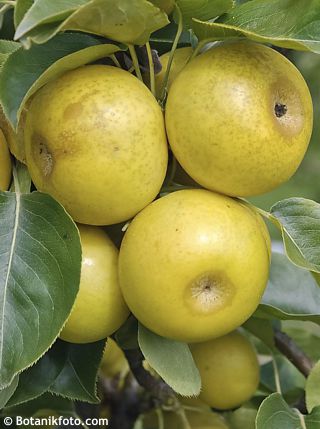CURRENTLY IN STOCK:
You can tell by the name where this medium sized tree comes from: former Persia (current Iran). Rather unusual tree maintains branches from the ground. It has moderate growth rate and does excellently in our climate. It can grow to 3-6 m. Attractive beech-like leaves are 7-13 cm long, bright grass g ...

5 - 12m

4 - 6m

full to partial sun

4 (down to -34°C)

for zone 5+6

for zone 7
One of the most magnificent trees of our climate comes from East Asia and is called the Princess Tree or Empress Tree or even Foxglove Tree. Its main feature is giant leaves which can be as much as 30 cm long and wide, very hairy, pale to deep green. Thanks to them empress trees are often mistaken f ...

V - VI

5 - 10m

2 - 6m

full sun

5b (down to -27°C)

for zone 5+6

for zone 7
Amur Cork Tree is a beautiful specimen tree native to a large area around the Amur River in N.E. Asia - Manchuria, the Amur region in Russia, and Mongolia. Since the winter temperatures can drop to -40 °C there, no wonder that it is popular especially in countries with colder climates where it is pl ...

8 - 15m

8 - 15m

full sun

3 (down to -40°C)

for zone 5+6

for zone 7
Media mock privet bears evergreen, opposite, 3-4 cm long, broadly elliptic, very dark green, leathery, and glossy leaves. In mid or late spring appear profusion if tiny, insignificant, creamy white flowers followed by small, blue-black, spherical fruit which recalls tiny balls of black pepper when f ...

3 - 4m

2 - 4m

full sun

7 (down to -23°C)

for zone 5+6

for zone 7
CRUNCHY® is a French introduction of Chinese photinia invented by Jean-Pierre Faure. When I first saw it I was amazed at its similarity to Coppertone loquat, especially as a standard tree. Loquat is a Mediterranean, tender tree which is not hardy here at all so CRUNCHY® photinia will make ...

2 - 4m

1 - 2m

full to partial sun

7 (down to -23°C)

for zone 5+6

for zone 7
Red Robin is a New Zealand selection of Fraser's photinia which is considered the first and also possibly the most successful Fraser's photinia variety of 20th century. After 20 years from its introduction it received the Award of Garden Merit (AGM) by the English Royal Horticultural Society (RHS) f ...

V

2 - 4m

1,5 - 3m

full to partial sun

7 (down to -23°C)

for zone 5+6

for zone 7
Tree form or PINK MARBLE® photinia has evergreen, ovate, and glossy leaves of dark green colour with white margins and silvery-white veins just like marble has, that gain pink shades in autumn and winter. However, the best show happens when new leaves emerge - they are bright pink red and last ...

2 - 4m

1,5 - 2,5m

full to partial sun

7 (down to -23°C)

for zone 5+6

for zone 7
Carré Rouge is a selection of Fraser's photinia from Red Robin variety. It is commonly believed to have originated in French Nantes, however, the truth is that the first plants were found in a Tuscan nursery in Pistoia, Italy, and named Mandarino. It produces smaller leaves of intensely red colour w ...

2 - 4m

1 - 2m

full to partial sun

7 (down to -23°C)

for zone 5+6

for zone 7
Caucasian spruce is an attractive conifer with an interesting habit. Lateral branches grow horizontally first, later they rise a bit upwards in an angle of about 45° while new growths are slightly drooping. Aureospicata is a variety with bright yellow new foliage that lasts for as long as 6 weeks.
...

8 - 15m

4 - 6m

full sun

5 (down to -29°C)

for zone 5+6

for zone 7
If you like Mediterranean umbrella pines but feel sorry that it is too tender for our climate try to have a look at this selection of dwarf Japanese red pine. It is called Alice Verkade and has bright green, soft needles. It is a slow growing plant making only about 7-10 cm per year, forming a beaut ...

1 - 2m

0,5 - 1,5m

full sun

5 (down to -29°C)

for zone 5+6

for zone 7
Austrian (black) pine was first classified by Austrian botanist Johann Arnold in 1785. It is a hardy tree which escaped Austria in early 20th century, and can now be found all around Europe, down to Turkey, and in North Africa. Hard to say if Mother Nature needed a stronger substitute for more tende ...

10 - 30m

6 - 8m

full to partial sun

3 (down to -40°C)

for zone 5+6

for zone 7
Being a plant lover based in Europe and perhaps a bit of a traveler, too, I suppose you must have been to the Mediterranean at least once in your life, am I right? And there, you must have come across one of the key features of the Mediterranean landscape apart from the Tuscan cypress – the It ...

10 - 20m

8 - 15m

full sun

8 (down to -18°C)

for zone 5+6

for zone 7
Scots pine is a European native pine species, and is native in our country, too. Its makes the most beautiful and at the same time the most bizarre specimens in the wild. It bears 5-7 cm long, mid green needles with a slight bluish overlay. They are borne in pairs and remain on the tree for 3 years ...

2 - 15m

2 - 6m

full sun

3 (down to -40°C)

for zone 5+6

for zone 7
Scots pine is a European native pine species, and is native in our country, too. Its makes the most beautiful and at the same time the most bizarre specimens in the wild. Glauca is a selected variety with blue green needles that are longer compared to those on Watereri variety and not so stiff. In c ...

2 - 10m

2 - 6m

full sun

3 (down to -40°C)

for zone 5+6

for zone 7
Uncinata is a subspecies of mountain pine. Its main difference from dwarf mountain pine is a central leader which helps it make a tree character. Also, this pine is much taller in full maturity as opposed to common mountain pine, forming a widely pyramidal habit, slightly irregular. Uncinata is comm ...

10 - 20m

3 - 6m

full sun

2 (down to -45°C)

for zone 5+6

for zone 7
The Himalayan pine has extraordinary, upto 20 cm long needles (in bundles of 5), silvery blue colour, young needles are erect but as they mature they droop creating a pendulous effect. A magnificent specimen tree to draw passers-by’s attention. Will thrive in any semi-moist soil, always well-d ...

15 - 25m

8 - 12m

full sun

5 (down to -29°C)

for zone 5+6

for zone 7
Digitata is a naturally occurring form of oriental plane, now considered a variety. It was first described by British botanist George Henry (1806-1879) who also admitted that the tree had been put into commerce some 30 earlier by Loddiges, a significant nursery of 18th and 19th century renowned for ...

15 - 25m

15 - 20m

full sun

7 (down to -23°C)

for zone 5+6

for zone 7
Some trees have identity crisis and scientists are trying to trace up their true origin. As these efforts often end up in argumentative sessions we tend to choose the easiest possible explanation. In the case of this London plane tree we rather believe it comes from Cenozoic platanus aceroides and w ...

5 - 30m

4 - 20m

full sun

4 (down to -34°C)

for zone 5+6

for zone 7
Just like many beautifully flowering trees or shrubs, this flowering cherry, too, comes from China. It is a British selecion of highly demanded and popular variety called Kanzan from 1935 of much less vigorous growth making it suitable for small gardens as well.
Pink Perfection flowering cherry bea ...

IV - V

3 - 5m

3 - 4m

full sun

4 (down to -34°C)

for zone 5+6

for zone 7
Originally named Snofozam after it was put to trade this hybrid weeping cherry received a nicer name Snow Fountains® which tells everything. In the spring it produces masses of lightly scented pure white flowers along plentiful of weeping branches that may run almost to the ground unless pruned ...

IV - V

1,5 - 3m

1 - 3m

full sun

4 (down to -34°C)

for zone 5+6

for zone 7
Harcot is a Canadian breeding of apricots made by Richard Layne from Harrow in Ontario. It is a very hardy and tasty apricot variety from 1978. The fruit is medium-sized with orange and red skin, ripening from late July. The flesh is sweet and juicy, freestone, and the stones have sweet kernels. Fru ...

IV - IV

3 - 5m

2 - 4m

full sun

5 (down to -29°C)

for zone 5+6

for zone 7
Hargrand is a Canadian breeding of apricots made by Richard Layne from Harrow in Ontario. It is a very hardy and tasty apricot variety from 1979. The fruit is large if thinned in late spring. It has orange skin with some red pigment spots and mature from the first week of August. The flesh is sweet, ...

IV - IV

3 - 5m

2 - 4m

full sun

5 (down to -29°C)

for zone 5+6

for zone 7
Harlayne is a Canadian breeding of apricots made by Richard Layne from Harrow in Ontario. It is a very hardy late apricot variety producing fruit from about mid August in CE climate. The fruit is deep orange red flushed, almost rounded, sweet, aromatic, and freestone. Fruit is great for fresh consum ...

3 - 5m

2 - 4m

full sun

4 (down to -34°C)

for zone 5+6

for zone 7
Polonais is a late apricot tree variety from Provence in France. It produces rounded to oval fruit of golden yellow skin with orange cheeks and some red freckles. The flesh is sweet and juicy, mildly aromatic and medium firm which makes it ideal for making preserves apart from eating fresh. Maturity ...

3 - 5m

2 - 4m

full sun

5b (down to -27°C)

for zone 5+6

for zone 7
Dönissens Gelbe is a super sweet and aromatic variety of yellow sweet cherries from Germany. It produces masses of medium-sized, juicy fruit in July. Its colour brings one advantage – it is usually untouched by birds who relish on red-coloured cherries.
It is self-sterile and needs a pollina ...

IV - IV

3 - 5m

3 - 4m

full sun

5 (down to -29°C)

for zone 5+6

for zone 7
...

3 - 6m

2 - 4m

full sun

for zone 5+6

for zone 7
Hedelfingen is a very good variety of sweet cherry. It bears medium-sized fruit in early summer. Fruit is sweet and crunchy and partly resistant to cracking. It gains its colour about a week before it is truly mature. It needs protection from cherry-worms.
It is not self-fertile and needs a pollina ...

IV - IV

3 - 6m

3 - 4m

full sun

5 (down to -29°C)

for zone 5+6

for zone 7
Moreau is a dark-skinned variety of sweet cherry which has been popular with growers for many decades. It bears sweet and aromatic fruit in early July. It is medium resistant to cracking and cherry diseases. It needs protection from cherry-worms.
It is not self-fertile and needs a pollinator – ...

IV - IV

4 - 8m

3 - 5m

full sun

5 (down to -29°C)

for zone 5+6

for zone 7
This flowering cherry originated in France already in 1700. That is a success to see that a variety so old still finds its place among new and hyper modern selections. Well done! This is a medium sized tree with stunning blossoms. They are pure white, fully double, and appear in profusion from mid A ...

IV - V

6 - 12m

3 - 6m

full sun

5 (down to -29°C)

for zone 5+6

for zone 7
Stella is one the best modern self-fertile varieties of sweet cherries. It comes from Canada and produces reliable crop of large, sweet, very dark red, juicy fruit from end July. Self-fertile means it does not need a pollinating partner and you can have just one tree in the garden and there will alw ...

IV - IV

2 - 2,5m

1,5 - 2m

full sun

5 (down to -29°C)

for zone 5+6

for zone 7
Sunburst is another modern variety of self-fertile sweet cherries. It produces heavy yields of large, dark red, glossy, free-stone fruit of excellent flavour – sweet and juicy. Harvest begins in late July. The fruit is significantly resistant to cracking in rainy weather.
Self-fertile means i ...

4 - 6m

3 - 5m

full sun

5 (down to -29°C)

for zone 5+6

for zone 7
Van is a mid-season variety of sweet cherry. Its fruit ripens in early July. Fruits are large, heart-shaped, deep red, almost black. The flesh is aromatic, sweet, and has excellent taste. It needs protection from cherry-worms.
It is not self-fertile and needs a pollinated for heavy crop. It likes s ...

IV - V

4 - 6m

full sun

for zone 5+6

for zone 7
Büttners Rote Knorpelkirsche is a great and unique sweet cherry variety from German Halle found already in 1795. In early 2000‘ it was renamed to ALTENBURGER MELONENKIRSCHE which truly does no make its pronunciation any easier.
This cherry produces excellent fruit of unique taste and beautif ...

4 - 6m

3 - 5m

full sun

5 (down to -29°C)

for zone 5+6

for zone 7
MAXIMA is a modern, medium early, self-fertile cherry variety from Italy. It starts blooming only about 2 days later than Burlat (another medium-early variety) which helps the flowers escape cherry fruit flies that damage late hard-fleshed cherries by laying eggs inside from which are borne worms. M ...

IV

3 - 5m

2 - 4m

full sun

for zone 5+6

for zone 7
Morellenfeuer is one of the top German sour morello cherries. It bears medium-sized, burgundy-black fruit with dark, juicy flesh that is both sour and light sweet, aromatic, freestone. It is ideal eaten fresh as well as processed in jams, preserves, desserts etc. It is a late variety cropping in Aug ...

IV - V

3 - 6m

2 - 4m

full sun

5 (down to -29°C)

for zone 5+6

for zone 7
President is an amazing moyer plum variety of excellent taste and late maturity. Unlike most moyer plums such as Stanley of Jojo which can be picked up as early as in late August, you have to be more patient for President as it ripens in roughly mid September. And as it matures over almost 4 weeks y ...

3 - 6m

2 - 3m

full sun

4 (down to -34°C)

for zone 5+6

for zone 7
Reine Claude d´Oullins is another French variety out of Reine Claude range. It is a greengage with large, spherical fruit of greeny-yellow fruit. It is delicious, sweet and juicy taste, the flesh is attached to the core. It is an early variety that ripens from mid to end of August.
It flowers in Ma ...

V - V

3 - 4m

2 - 4m

full sun

5b (down to -27°C)

for zone 5+6

for zone 7
Mirabelle de Nancy is a cherry plum which is believed to be present and popular in France since the 15th century. Cherry plum is specific fruit, something between damson and plum. This variety produces rich yellow or golden-flushed, spherical, free-stone fruit that is juicy and sweet, not particular ...

IV - IV

3 - 6m

2 - 4m

full sun

5 (down to -29°C)

for zone 5+6

for zone 7
This flowering plum is a popular flowering tree although very few people even know its name. It is a slow to medium fast growing small tree which makes a handsome crown with profusion of flowers early in the spring, sooner than any Japanese flowering cherry. In our garden it is the first heavily blo ...

III - IV

1,5 - 3m

1 - 2m

full sun

4 (down to -34°C)

for zone 5+6

for zone 7
...

IV

2 - 3,5m

1 - 1,5m

full sun to shade

7 (down to -23°C)

for zone 5+6

for zone 7
Novita is a new sensation among cherry laurels. Eventually there is a hardy variety which has benefits of the formerly more tender ones: it grows fast and big, has large leaves of a nice colour, and is surprisingly hardy for a large-leaved cherry laurel. It is a selection of Rotundifolia variety hen ...

V

3 - 6m

1 - 3m

full sun to shade

5b (down to -27°C)

for zone 5+6

for zone 7
Otto Luyken is one of the best known as well the most reliable and the hardiest selection among cherry laurels. Its evergreen pointed leaves are glossy and dark green. In April and May appears a profusion of erect racemes compound of small, creamy white, fragrant flowers followed by blue-black fruit ...

IV - V

1,5 - 3m

2 - 3m

full sun to shade

5 (down to -29°C)

for zone 5+6

for zone 7
KLEOPATRA® is a Hungarian cherry laurel variety bred by Dr. Józsa Miklos and introduced in 2007. It forms a compact, graceful shrub or a small tree with spreading branches and dark green, glossy, leathery, evergreen leaves. They emerge coppery orange just like on Etna® variety and can be d ...

IV - V

2,5 - 3,5m

1 - 2m

full sun to shade

5b (down to -27°C)

for zone 5+6

for zone 7
Angustifolia is a very elegant variety of Portugal laurel. Irrespective of its origin it belongs to the hardiest evergreen plants for our climate and performs better than some large-leaved cherry laurels. It has narrower leaves than the species and brighter red stalks and new twigs. In May and June ...

V - VI

3 - 6m

2 - 3m

full to partial sun

7 (down to -23°C)

for zone 5+6

for zone 7
Brenelia is an elegant novelty variety of Portugal laurel from early 21st century. In appearance and use it is similar to Angustifolia variety but has larger leaves with undulated margins and exhibit faster growth. The stalks and new stems are rich burgundy red not only in winter but most of the gro ...

VI

3 - 6m

2 - 4m

full to partial sun

7 (down to -23°C)

for zone 5+6

for zone 7
If you like peaches and are looking for a heavy cropper try Fayette. This freestone variety bears large fruit that can be compared to the modern varieties. It has smooth, deep red skin with some yellow-orange shades, yellow flesh, and sweet taste. It matures from end August until mid September. Frui ...

IV - IV

3 - 4m

2 - 3m

full sun

5b (down to -27°C)

for zone 5+6

for zone 7
Ice Peach is a dwarf peach tree variety and the first white-skin peach in history. It produces medium-sized fruit with very pale yellow to almost white skin as well as the flesh which is sweet, low in acidity, aromatic, and juicy. It matures in first half August and makes small, slightly spreading t ...

1 - 1,5m

1 - 1,5m

full sun

5b (down to -27°C)

for zone 5+6

for zone 7
Redhaven is one of the most successful commercial varieties of peach in the world. It comes from the USA, and was registered in 1973.
It flowers profusely, is self-fertile and very productive. The fruit is mid-sized, with yellow and red hairy skin and yellow flesh and ripens from mid to end summer. ...

IV - V

3 - 4m

full sun

5a (down to -29°C)

for zone 5+6

for zone 7
Suncrest is a late peach tree variety, a cross between Alamar and Gold Dust. It produces large, rounded fruit with only slightly flattened tops. The skin is yellow-green, remarkably flushed carmine red when mature. The flesh is firm, yellow, very sweet, juicy, and aromatic. Stone-free and self-ferti ...

3 - 3,5m

3 - 4m

full sun

5b (down to -27°C)

for zone 5+6

for zone 7
AMBER® is a dwarf peach tree developed by Chris “Floyd” Zaiger (1926-2020) who devoted all his adult life to breeding stone fruit. He set up Zaiger’s Genetics in Modesto, California, USA, where plants are bred using hand pollination rather than using DNA manipulation. As of 20 ...

IV

1 - 1,5m

1 - 1,5m

full sun

5b (down to -27°C)

for zone 5+6

for zone 7
Platycarpa is not a peach variety but a type (form), in botany it is recognized by var. or f. in front of the name. It has many names and is most often called flat peach, donut peach, even UFO peach, and among growers commonly paraguayo peach. From a fruit tree expert I learnt that this is a wild fo ...

IV

2 - 5m

2 - 4m

full sun

5 (down to -29°C)

for zone 5+6

for zone 7
Just like many beautifully flowering trees or shrubs, this flowering cherry too comes from China. It even bears a name of an ancient tendai buddhist temple.
Kanzanu is a mid sized tree with double pink to magenta flowers which come out in early April and follow throughout the spring. It is probabl ...

IV - V

5 - 8m

4 - 5m

full sun

5 (down to -29°C)

for zone 5+6

for zone 7
True pink is the colour of this beautiful Cheal´s Weeping Cherry. Either a standard or a half standard tree, this flowering cherry always has rather pendulous branches forming a wide crown.
Double flowers appear on bare branches at the end of April and continue throughout May already with new leav ...

IV - V

2,5 - 3m

1 - 3m

full to partial sun

5 (down to -29°C)

for zone 5+6

for zone 7
God bless all botanists who restlessly create new and yet more beautiful crosses and hybrids of plants, so we can enjoy splashes of colours and abundant flowering in our gardens.
Many of us thought Kanzan to be the best flowering and the most beautiful cherry. Well, get ready for another selection ...

IV - V

6 - 8m

3 - 6m

full sun

5 (down to -29°C)

for zone 5+6

for zone 7
Autumnalis is a popular variety of Higan cherry. It received its name for the season in which it can re-bloom if the weather is sunny and warm. Be it early late autumn, early or mid winter this tree will open its pinkish buds once the temperature remains high above zero for more than just a few days ...

III - IV

3 - 6m

3 - 6m

full to partial sun

4 (down to -34°C)

for zone 5+6

for zone 7
The prunus genus contains over 400 species which are useful and beautiful at the same time. There are cherries, plums, peaches or sloes, as well as flowering Japanese cherries, cherry laurels etc. This variety received its name for the season in which it can re-flower if the end of autumn is warm. H ...

III - IV

3 - 4m

1 - 3m

full sun

4 (down to -34°C)

for zone 5+6

for zone 7
Fukubana is another beautiful flowering Higan cherry for spring display. It produces masses of unique, almost star-shaped, semi-double, rich pink flowers in early spring. The flowers look like those on deutzias and even though they do not last over a long time they make a stunning show with its colo ...

IV - IV

3 - 5m

2 - 4m

full sun

5 (down to -29°C)

for zone 5+6

for zone 7
Weeping Higan cherry has rich pink, double flowers in early cherry season. It makes pendent branches that soon reach the ground. It is the right spring-teller as it announces warmer weather as one of the first flowering trees. It seldom grows taller than 3 m which makes it an ideal selection for eve ...

IV - IV

3 - 4m

1 - 3m

full to partial sun

4 (down to -34°C)

for zone 5+6

for zone 7
Yoshino cherry brings joy to spring gardens with profusion of white flowers borne from deep red calyxes. It is a hybrid cherry that came from crossing prunus sunhirtella and prunus speciosa. The flowers appear on bare branches in early spring – around April and are followed by deciduous, cherr ...

IV - IV

6 - 12m

3 - 7m

full sun

5 (down to -29°C)

for zone 5+6

for zone 7
Caucasian wing nut is one of my favorite trees. I first saw it growing in the castle garden of Třeboň chateau where it was ingeniously and logically placed as a focal point in the front of the main facade. And despite its size I knew immediately that I wanted to grow this „baby“ in my ga ...

V

15 - 20m

10 - 15m

full sun

5 (down to -29°C)

for zone 5+6

for zone 7
Callery pear is a flowering (ornamental) pear tree which is cultivated for its profuse flowering in April. The tree produces a huge quantity of snow white flowers followed by small, almost spherical fruit that is edible but not too tasty.
Chanticleer is a famous variety of narrowly conical habit. I ...

IV - V

8 - 13m

4 - 6m

full sun

5 (down to -29°C)

for zone 5+6

for zone 7
Clapps Favourite is an early pear tree variety that was first introduced in the USA before 1860. It bears medium-sized pears with greeny-yellow skin, red flushed. The flesh is sweet, soft and juicy, “melt in the mouth”. It is ideal snack fruit eaten just as picked from the tree.
It cro ...

IV - V

3 - 5m

2 - 4m

full sun

4 (down to -34°C)

for zone 5+6

for zone 7
Conference is a famous pear tree from the 19th century. It was first introduced at the National British Pear Conference in 1885, hence its name. It has medium-sized fruit that is pyriform if cross-pollinated, or banana-shaped if self-pollinated.
The fruit is pale green with golden brown russet pat ...

IV - IV

3 - 5m

2 - 4m

full sun

4 (down to -34°C)

for zone 5+6

for zone 7
Williams is probably the most known and spread out pear in the world. Its complete name is Williams bon Chretien and comes from the UK, 18th century.
It is an early variety bearing mid-sized or large fruit with light green or yellow skin. The flesh is very juicy, aromatic, and sweet, it quickly sof ...

IV - V

3 - 5m

full sun

4 (down to -34°C)

for zone 5+6

for zone 7
Kosui is a nashi pear of excellent taste, for me definitely the best I have had so far. It produces rounded fruit with smooth, dark sandy yellow skin covered with tiny speckles. The flesh is white, extremely juicy and sweet, and on top of that so aromatic – you find yourself wondering when som ...

IV - V

2 - 4m

1,5 - 3m

full sun

5b (down to -27°C)

for zone 5+6

for zone 7
Among quite a few English names of this species I think that silver pear is best. This deciduous tree really belongs to a pear family and has silvery blue-green, willow-like, narrow leaves. They emerge much greener in mid spring, along with the white, scented, 5-petalled flowers that are followed by ...

IV - V

3 - 5m

2 - 4m

full sun

4 (down to -34°C)

for zone 5+6

for zone 7













